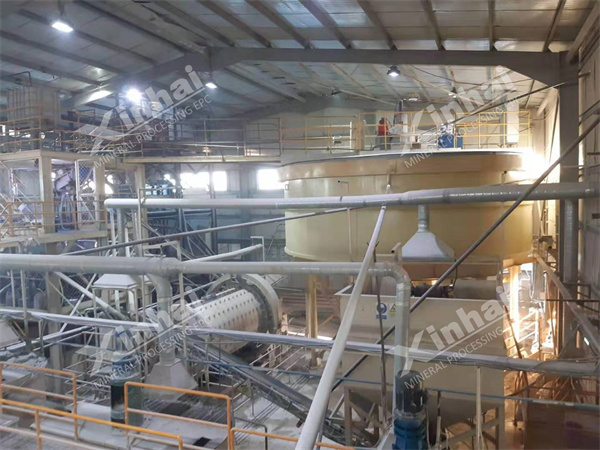The management of iron ore tailings is a crucial step in mining operations. Traditional methods for handling tailings present numerous challenges, including environmental pollution, resource wastage, and high costs. As technology advances and environmental consciousness strengthens, dry discharge technology is increasingly emerging as an effective solution to these issues.
The treatment of iron ore tailings faces many challenges, including tailings storage capacity approaching saturation, high cost of long-distance tailings transportation, and low utilization rate of return water. These issues seriously constrain the sustainable development of mining production.
Tailings dry discharge technology refers to the use of physical or chemical methods to remove moisture from tailings and achieve dry discharge of tailings. This technology has the advantages of reducing environmental pollution, improving resource utilization, and lowering treatment costs.
(1) Process flow
A certain iron ore tailings treatment project adopts a combination process of high-efficiency cyclone high-frequency dewatering screen+thickener filter press. This process first uses an efficient cyclone to grade and concentrate the tailings, then further dehydrates them through a high-frequency dewatering screen, and finally achieves dry discharge of the tailings through a thickener and filter press.
(2) Technological advantages
Process simplification: This process is simple, easy to operate and manage.
High concentration efficiency: The high-efficiency cyclone can quickly concentrate coarse-grained tailings.
Less equipment investment: Compared with traditional tailings treatment equipment, this process requires less equipment, reducing the initial investment.
Small footprint: This process requires compact equipment and occupies minimal space.
Low operating costs: Due to the low energy consumption of the equipment, the operating costs are significantly reduced.

(3) Introduction to Key Equipment
High efficiency cyclone: By optimizing the feeding method, column length, cone angle and other structures, the classification and concentration efficiency and processing capacity have been improved.
High frequency dehydration screen: using a high-power motor and high speed, it improves the dehydration effect and reduces operating costs.
Thickener: By adding coagulants, the settling speed of materials is accelerated to achieve solid-liquid separation.
Filter press: suitable for dewatering tailings with high viscosity and fine particle size, with good dewatering effect and strong adaptability.
On site production practice has shown that this process can effectively achieve dry discharge of iron ore tailings, significantly reduce the moisture content of tailings, and the moisture content of materials on the dewatering screen can reach 16-18%, meeting the requirements of dry discharge. At the same time, the application of this technology has also achieved comprehensive utilization of tailings resources, bringing economic benefits to the enterprise.
The application practice of the combination process of high-efficiency cyclone high-frequency dewatering screen+thickener filter press in the treatment of iron ore tailings has achieved significant results. This process not only improves the efficiency and environmental friendliness of tailings treatment, but also reduces the production cost of enterprises, and has broad prospects for promotion. With the continuous advancement and innovation of technology, tailings dry discharge technology will play a more important role in the sustainable development of mining in the future.